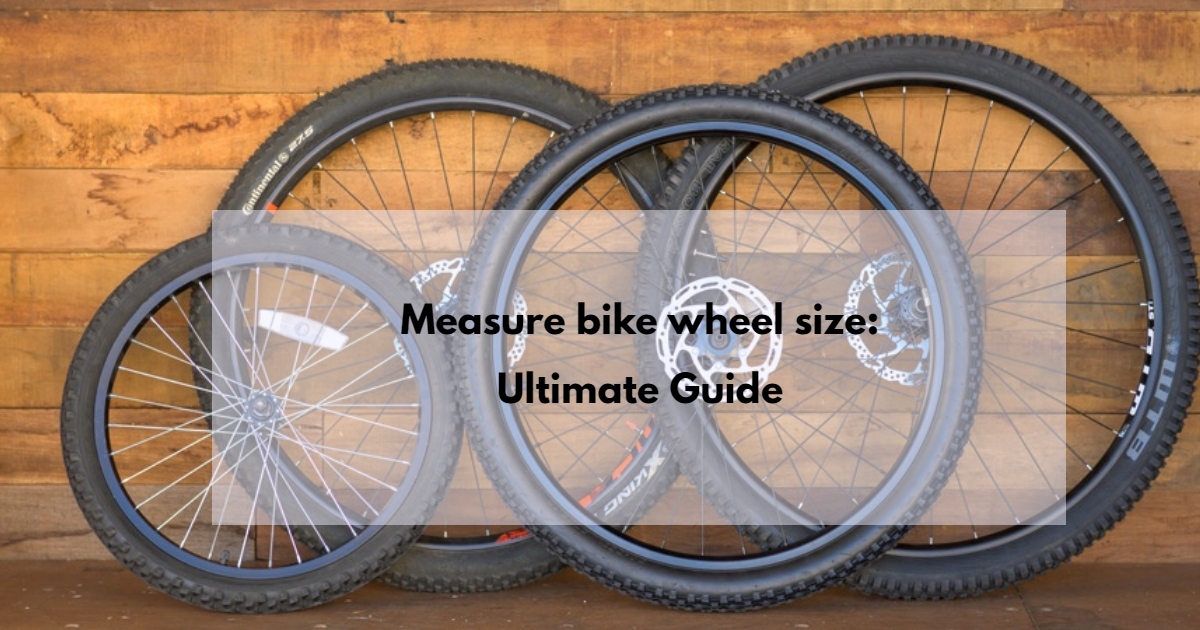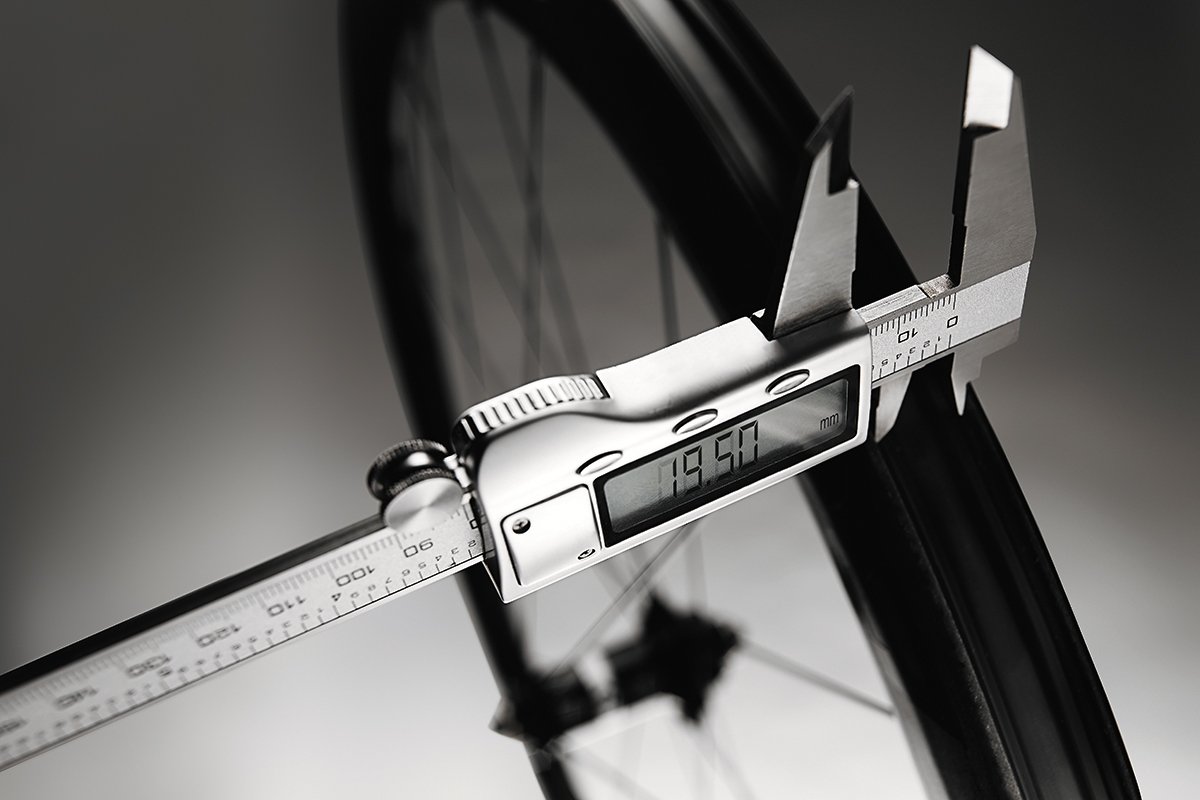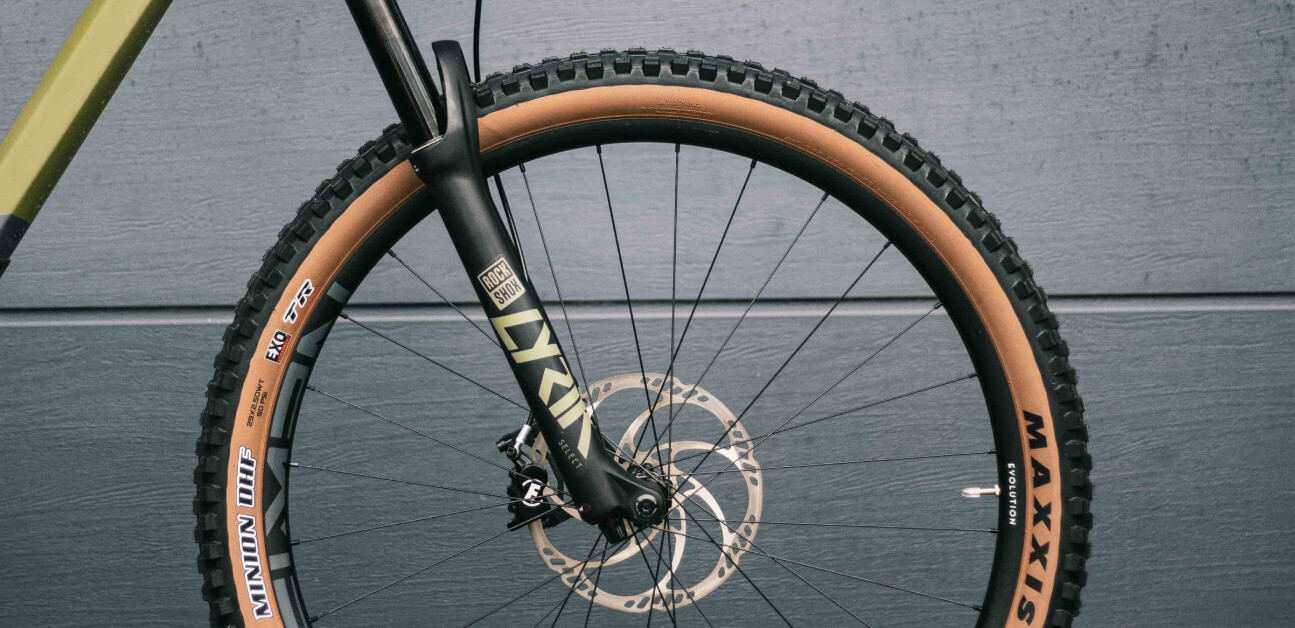Welcome to our detailed guide on measuring bike wheel size, an super important skill for both beginners and pros cyclists. Understanding how to accurately measure your bike’s wheel size is super important for bike maintenance, repair, and making sure a comfortable and efficient ride. Whether you’re in the market for a new bike, looking to replace a wheel, or simply curious about the specifics of your current setup, this guide will provide you with all the necessary information.
In this blog post, we’ll delve into both methods, helping you to master the art of wheel measurement. Alongside this, we’ll explore various wheel size standards and guide you in choosing the right size for your specific cycling needs.
Table of Contents
ToggleMeasuring Bike Wheel Size by Diameter
One of the simplest ways to measure your bike’s wheel size is by its diameter. To get started, you’ll need a tape measure or a ruler. This method involves measuring the distance across the wheel, from one edge directly to the opposite edge.
Step-by-Step Process
- Position Your Bike: Ensure your bike is standing upright and stable. It’s best to do this on a flat surface to get the most accurate measurement.
- Locate the Center of the Wheel Hub: Find the exact center of your wheel hub. This is super important as it marks the midpoint from which you’ll measure the radius of the wheel.
- Measure the Radius: Place your tape measure on the ground and extend it up to the center of the wheel hub. The measurement you get is the radius of your wheel.
- Calculate the Diameter: To find the diameter, simply multiply the radius by two. For instance, if the radius of your wheel hub is 12 inches, the diameter of your wheel would be 24 inches.
Tips for Accuracy:
- Make sure the tape measure is straight and taut while measuring.
- Double-check your measurements for precision.
- Remember, the diameter is the most common way of referring to bike wheel sizes.
Common Mistakes to Avoid:
- Measuring from the outside edges of the tire, which can give an inaccurate reading due to tire thickness.
- Not making sure the tape measure is exactly at the wheel’s center.
This method is quick and easy, making it a popular choice for many cyclists. However, for a more accurate measurement, especially important for specific types of bikes or replacement wheels, you might want to consider measuring by the ISO standard.
Understanding Diameter Measurements:
The diameter of a bike wheel is the most common way of referring to its size. Here are some typical examples of diameter measurements and the types of bikes they are often associated with:
- 700c: The standard size for most road and gravel bikes.
- 650c: A slightly smaller size found on some cyclocross and touring bikes.
- 29 inches: Commonly seen on mountain bikes.
- 26 inches: Often used for children’s bikes, hybrids, and older mountain bikes.
- 24 inches: Typically found on BMX bikes and children’s bikes.
Knowing these standard sizes is super important, as they are often used in the biking community and by manufacturers. However, these measurements don’t provide a complete picture, as they don’t account for tire width and profile, which can significantly affect your riding experience.
Measuring Bike Wheel Size by ISO Standard
For a more precise measurement of your bike’s wheel size, the ISO (International Organization for Standardization) method is the way to go. This method considers not just the diameter of the wheel, but also the width of the rim, giving you a more comprehensive understanding of the wheel’s size.
Step-by-Step Process:
- Prepare Your Tools: You’ll need a ruler or a caliper for accurate measurement.
- Measure the Bead Seat Diameter (BSD): The BSD is the diameter of the rim where the tire bead sits. Measure this first.
- Measure the Rim Width: Next, measure the distance between the two outer edges of the rim. This is your rim width.
- Calculate the ISO Wheel Size: Add the BSD and the rim width to get your ISO wheel size. For instance, if your rim’s BSD is 622 millimeters and the rim width is 17 millimeters, the ISO wheel size would be 639 millimeters.
Why ISO Standard is Important:
- Provides a more precise measurement, super important for fitting tires and wheels correctly.
- Helps avoid compatibility issues with tire and rim sizes.
- Widely used in the cycling industry, making it easier to find the right-sized components.
Understanding ISO Measurements:
The ISO measurement is a more technical way of determining wheel size, but it’s incredibly useful for making sure that your tires and wheels are compatible. ISO measurements are typically two numbers: the diameter of the bead seat (where the tire sits on the rim) and the width of the tire. For example, an ISO measurement of 622 x 19 means the bead seat diameter is 622mm and the tire width is 19mm.
Benefits of ISO Measurement:
- Precision: Offers a more exact measurement, reducing the risk of improper fitting.
- Compatibility: Ensures that the tire and wheel fit together perfectly, which is super important for performance and safety.
- Standardization: ISO measurements are standardized across the industry, so you can be confident when purchasing new tires or wheels.
Bike Wheel Size Standards:
Different types of bikes typically use different wheel sizes. It’s super important to understand these standards when looking for replacements or upgrades:
- 700c (622mm ISO): The most common size for road bikes.
- 650c (571mm ISO): Often found on smaller road bikes and triathlon bikes.
- 29-inch (622mm ISO, but wider): Common for mountain bikes, same bead seat diameter as 700c but usually wider to accommodate broader tires.
- 26-inch (559mm ISO): Once standard for mountain bikes, now more common in specific designs or older models.
- 24-inch (507mm ISO): Used in junior mountain bikes, BMX, and some utility bikes.
How to Choose the Right Bike Wheel Size:
Choosing the right wheel size is about more than just the diameter. Consider these factors:
- Bike Type and Purpose: Different styles of bikes (road, mountain, hybrid) require different wheel sizes.
- Riding Terrain: The terrain you plan to ride on can influence the best wheel size. Larger wheels (like 29-inch) are better for rough terrain, while smaller wheels offer more agility.
- Bike Frame Size: The size of your bike’s frame partly determines what wheel size you can use.
- Personal Preference: Comfort and handling preferences play a role in choosing wheel size.
- Consulting a Professional: If you’re unsure about the right wheel size for your bike, it’s always best to consult a professional mechanic. They can provide valuable advice based on your specific bike and riding needs.
Conclusion
Measuring your bike wheel size is a fundamental skill that enhances your understanding of your bike and helps in maintaining it. Whether using the diameter method for a quick check or the ISO standard for precise measurements, knowing your wheel size is invaluable for repairs, replacements, or upgrades.
Remember, choosing the right wheel size is super important for your riding comfort and bike performance. When in doubt, seek professional advice to ensure you make the best decision for your cycling needs.
For more information on bike maintenance and to explore a wide range of cycling products, visit our homepage at Refried Cycles.









